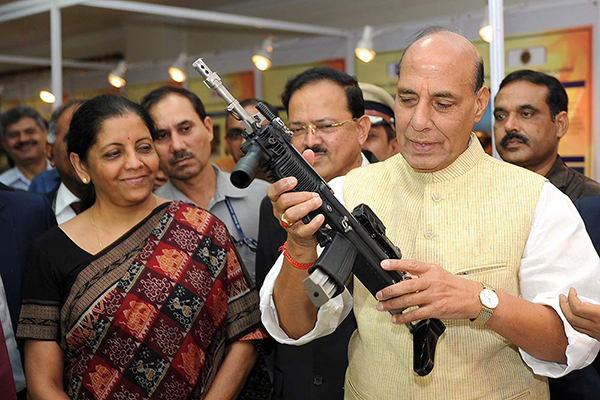In a renewed push to aatmanirbharta (self-reliance) in defence, India, on 7 April, published a new list of 101 weapons and systems that will come under a phased import ban over the next five years, with the military hardware sought to be developed locally ranging from light weight tanks, naval utility helicopters and mounted artillery gun systems to medium altitude long endurance unmanned aerial vehicles, missiles and so-called loitering munitions.
Releasing the third ‘positive indigenisation list,’ defence minister Rajnath Singh highlighted the pitfalls of operating imported weapons and systems whose software codes could be compromised and prove to be dangerous for the country’s security apparatus as it would open a “window of vulnerability.”
The list came out at a time when complications stemming from the wide-ranging sanctions slapped on Russia by the US and its allies on the back of the war in Ukraine have posed new challenges for the India-Russia defence relationship, put India’s military preparedness to the test and assigned new urgency to reduce dependence on imported military hardware to stay battle-ready.
These weapons and platforms will be indigenised in phases between December 2022 and December 2027.
Russia accounted for 46% of the country’s imports during the last five years even though India made fewer purchases from that country over the last decade. Its weapons exports to India fell 47% between 2012-16 and 2017-21, according to a report published by the Stockholm International Peace Research Institute (Sipri) last month. Two-thirds of Indian military equipment is of Soviet/Russian origin.
The other military systems and platforms included in the third list are long range beyond-visual-range missiles that can hit targets at 250 km, long range guided bombs, medium range anti-ship missiles (ship launched), submarine-launched cruise missiles (anti-ship), long range reconnaissance and observation systems (Lorros), high endurance autonomous underwater vehicles, weapon locating radars, next generation offshore patrol vessels, anti-radiation missiles, counter-drone systems, rockets, torpedoes and other ammunition.
This list comes on the back of two similar lists of 101 and 108 weapons and systems released in August 2020 and May 2021, respectively. The new list has taken the combined number of weapons and systems under a phased import ban by India to 310.


















